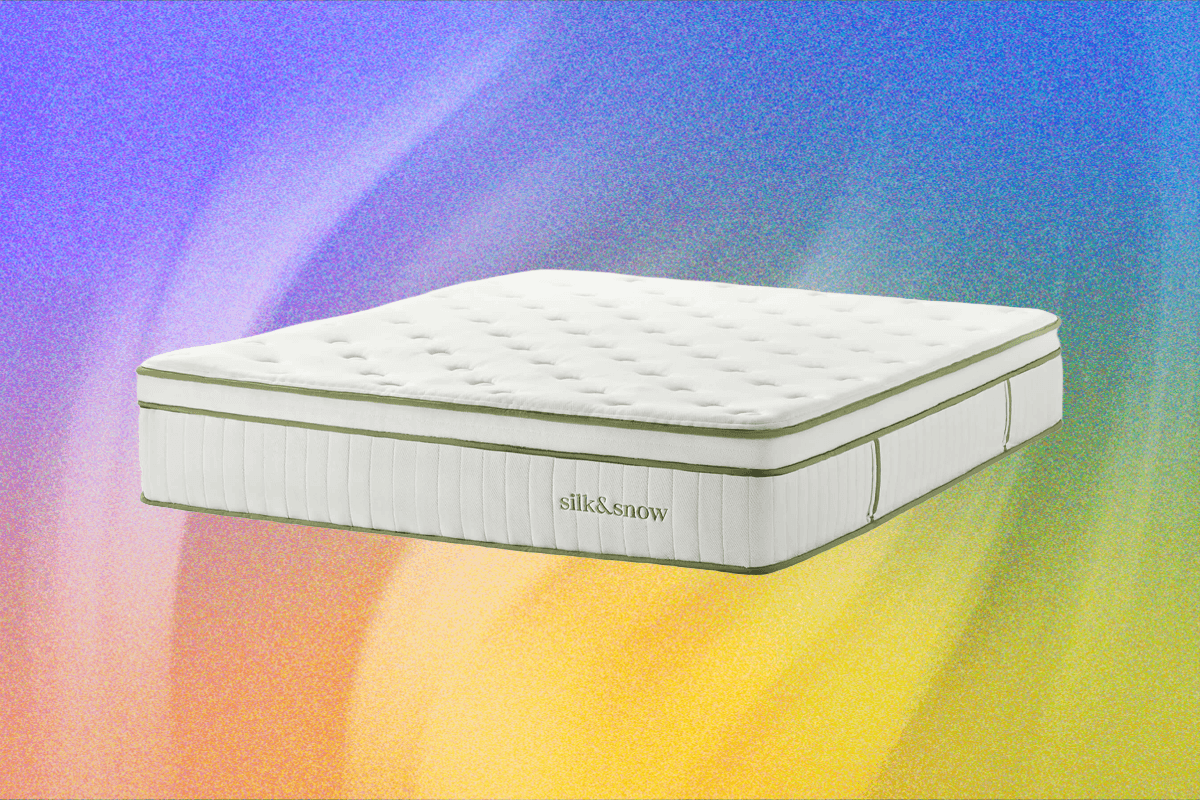Shopping for a mattress online is a lot of work—enough to make you need some rest. Picking the right bed, like the right bet itself, is better if you have enough support. To help you with the arduous process of selection, we’ve come up with guides that explain the need-to-know about mattress shopping. This includes the varying mattress types, how to select a mattress, and our thoroughly tested guide to the best mattresses you can buy online.
Today, it’s time to break down some of the terminology you’ll inevitably come across during your research. These words are signposts that point to how a mattress was made, tested, and, subsequently, how it performs. You don’t have to be a Spencer Institute sleep science coach to understand these terms—but, lucky for you, I am a Spencer Institute sleep science coach.
A Handy Mattress Dictionary
Pressure relief is a crucial aspect for certain sleeping positions, like side sleepers, and those who need to show their joints some love. The term refers to a mattress reacting to a person’s weight as it contacts the bed, and how well it’s able to counteract the pressure from putting your weight on more tender areas of the body. For side sleepers, a bed that is too firm means your hips and shoulders will be crying out for help because of the tension. Materials like latex and memory foam are known for their pressure-relieving capabilities. Memory foam, in particular, is very adaptive and “hugs” the body, which many side sleepers like.
Motion isolation is a term used to describe how well a mattress manages to not transfer movement or shaking across the bed, usually from one person to another. When movement does end up disrupting the stability of the bed, this is known as motion transfer. If you wake up easily or share your sleep space with a partner, pet, or child, motion isolation is typically unwelcome. Memory foam’s density is usually right on par with absorbing this feeling, and coils have evolved to include fabric pockets (this is what the term “pocketed coils” means). The idea is that when each coil is contained in its own zone, motion has a harder time moving across the bed as opposed to traditional coils, where everything was woven together. Pro tip: Make sure you have a stable frame, as that’s half the battle here, too, and is often overlooked.
Spine alignment, otherwise known as lumbar support, is an evaluation of how well the spine is kept in alignment. When you’re standing up straight, you’ll notice that your lower back slightly curves. This is aptly called the “S” curve, because healthy alignment of the upper and lower spinal cord does somewhat resemble this letter. But your posture isn’t just a concern while upright, as a lack of spine alignment support while sleeping isn’t healthy in the long term. Each sleeping position brings about its own set of concerns, as even the smallest degree of sinking in this area can cause misalignment. Stomach sleepers need a firmer surface to keep this area uplifted, as something too soft causes the lower back to sink in. Side sleepers have to keep the hips and shoulders on the same level, and the lower back can’t be sinking into too much of a “U” shape. The alignment of your neck is key, as anybody with back pain will tell you. This is where many mattress makers have stepped up with their designs, putting firmer support in the center of the bed by way of extra memory foam layers or reinforced coils.
Edge support is important for a couple of reasons. If you’re someone who gets banished to the edge of the bed while sleeping due to a pet or partner making themselves comfy, you need edge support. Sit on the bottom while getting dressed? You need edge support. Engaged in adult extracurricular activities and don’t want to feel like you’re falling off the mattress? Edge support. Mattress models, especially hybrids, will usually strategically put reinforced coils around the outer edges to make sure weight is supported. This also helps with durability as time goes on, preventing the edges from sagging. Materials like memory foam can be hit-or-miss for edge support, especially depending on the firmness level involved. Too soft, and you may be encroaching on feeling some sagging in any one of the aforementioned situations.
Cooling is going to be something to keep in mind for sleepers who overheat easily. There are many cooling mattresses out there, and measuring how well a mattress can regulate surface temperature is valuable information. Some beds involve natural and organic materials that may not feel cool to the touch, but are able to dispel heat relatively quickly. Others will involve a lot of proprietary cooling tech, which gives off a visceral feeling of coolness. Keep in mind that factors such as the surrounding bedroom temperature, what you wear to bed, what sheets and accessories you use, and ultimately the mattress materials involved will all play a part in the overall mattress’s temperature control.
Responsiveness is how well a bed “responds” to the sleeper moving around on top of it. If the bed is softer and sleepers sink in more, they may have a harder time getting in and out of bed or switching between sleeping positions. On the other hand, a highly responsive bed is snappy, feeling as if it is moving alongside you so that you’re always receiving support.
Off-gassing is the mattress equivalent of a new car smell, but mattress edition. If you notice a chemical smell radiating from your mattress once unboxed or unpackaged, the materials within the bed are airing out as they inflate. Certifications like CertiPUR-US are crucial here, because it’s third-party assurance that the air you’re breathing in isn’t tainted by anything potentially hazardous. A mattress should be good to go within a day or two of unboxing it.
Don’t be daunted by official terms and names in the mattress world—they’re actually pretty straightforward. Use this list to decipher what each mattress is being described as, and you’ll be good to go.



